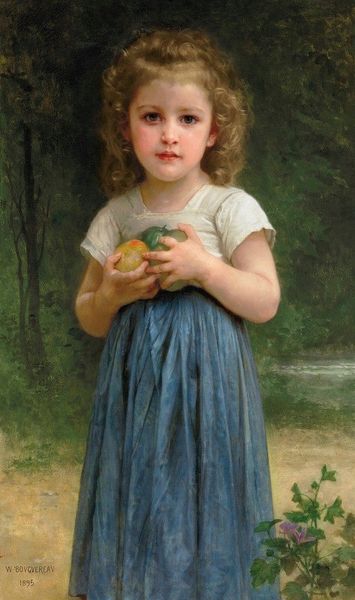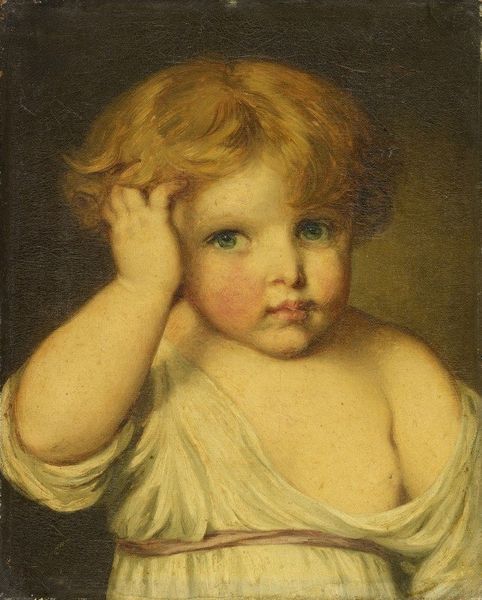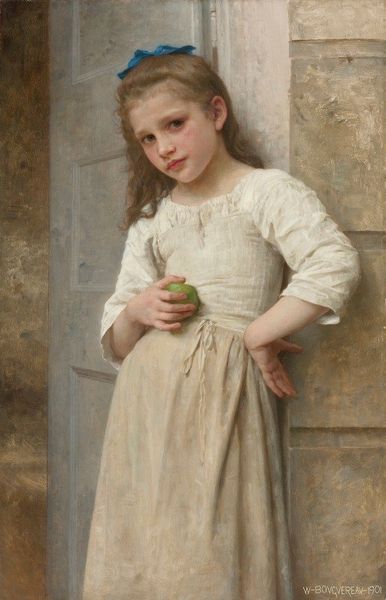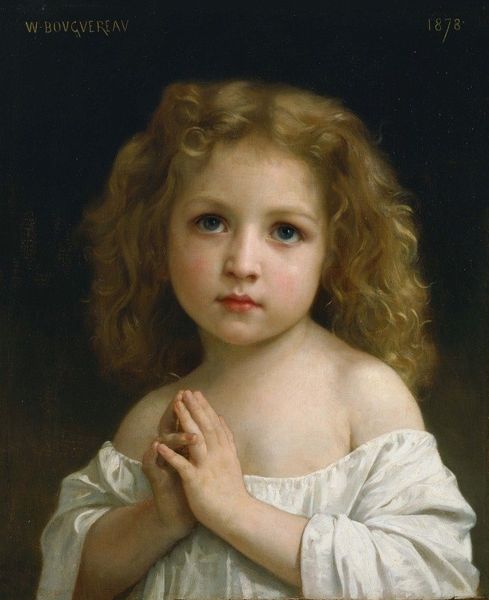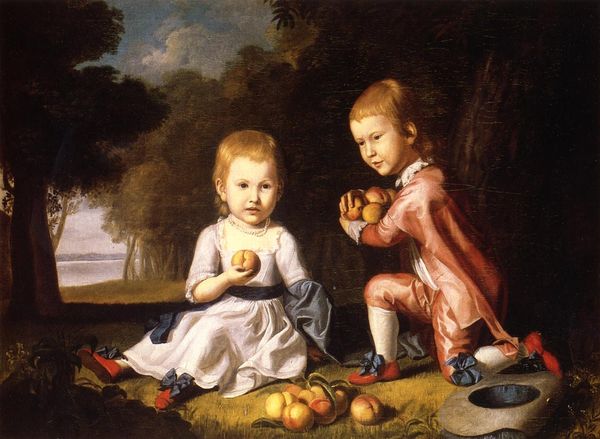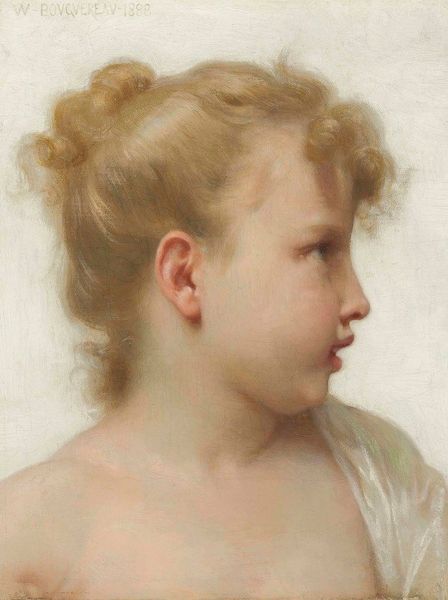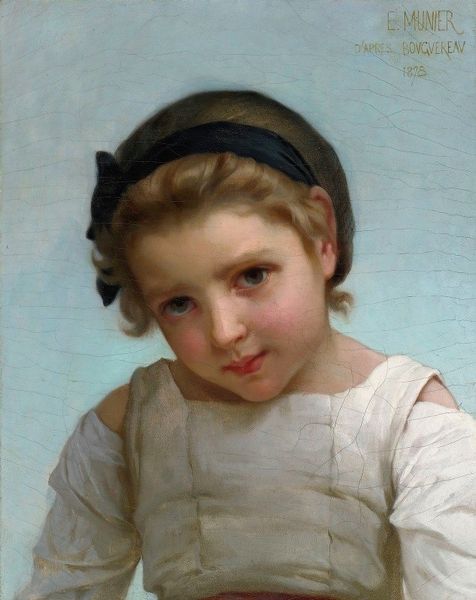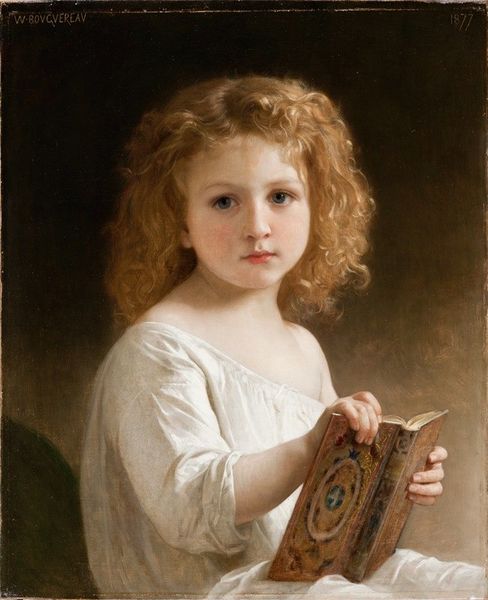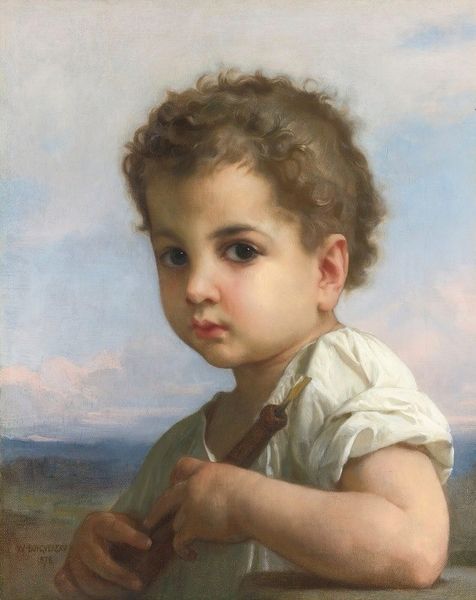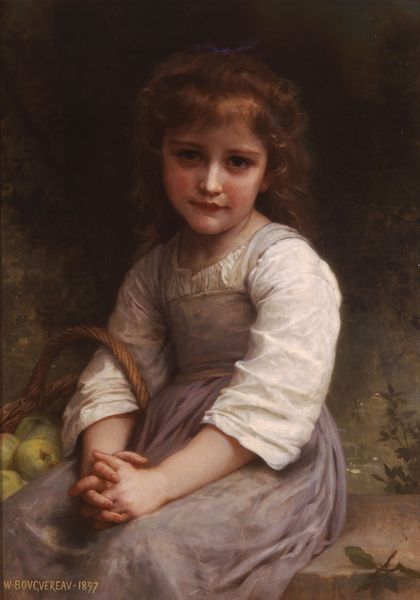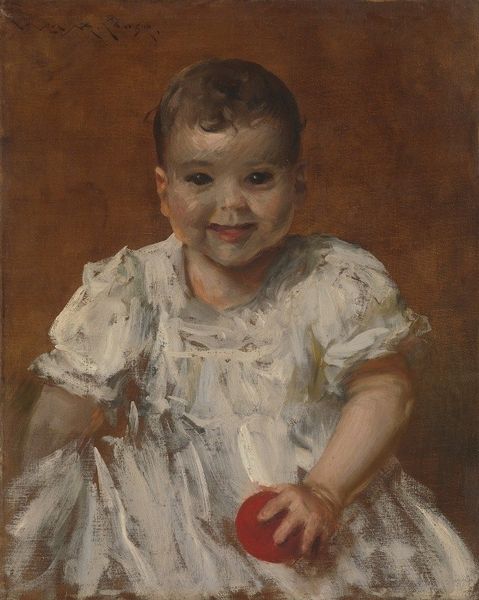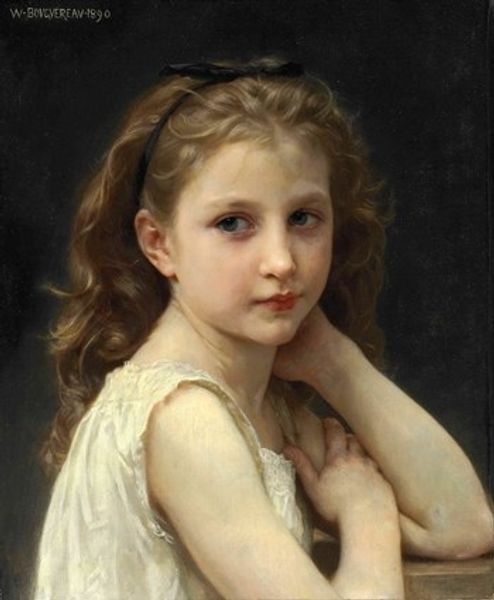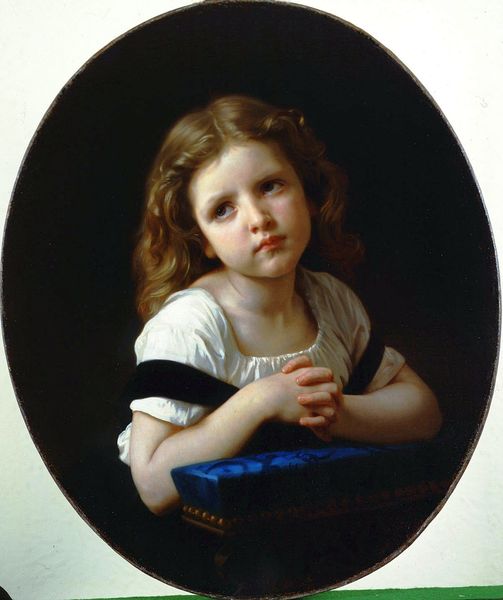
painting, oil-paint
#
portrait
#
figurative
#
portrait
#
painting
#
impressionism
#
oil-paint
#
genre-painting
#
realism
Copyright: Public Domain: Artvee
Editor: Here we have Léon Bazile Perrault's "Fillette à l'orange," painted in 1868. The oil on canvas depicts a little girl holding an orange. The sweetness in her gaze makes me think of idealized childhood. What stands out to you? Curator: This painting reflects the Realist movement's interest in everyday life, moving away from grand historical narratives and idealizing instead a sentimental vision of childhood innocence. Perrault presents us not just with a portrait, but with an image consciously crafted for public consumption, to appeal to bourgeois values. Do you notice how the darkness of the background sets off her delicate features? Editor: Yes, that contrast is quite stark. So, are you saying that even a seemingly simple image of a child could be interpreted through the lens of societal values and perhaps even politics? Curator: Precisely! This type of genre painting became increasingly popular in the 19th century. They presented constructed views of childhood, detached from the realities faced by many working-class children, often serving as symbols of domestic bliss. In this sense, even such intimate imagery is very much public art. Who gets to have such simple bliss and safety? Editor: That's fascinating. I never considered the underlying social commentary a simple portrait could offer. Curator: Think about the institutions exhibiting the artwork: The Paris Salon was an event of huge cultural importance with juries and entry requirements which served to regulate which values were rewarded with prizes. Editor: Wow, I’ll definitely look at paintings differently now! It's so much more than just aesthetics, but also about what's valued by society. Curator: Indeed. It's a dialogue between the artist, the artwork, and the viewer, all within a specific socio-political context.
Comments
No comments
Be the first to comment and join the conversation on the ultimate creative platform.

